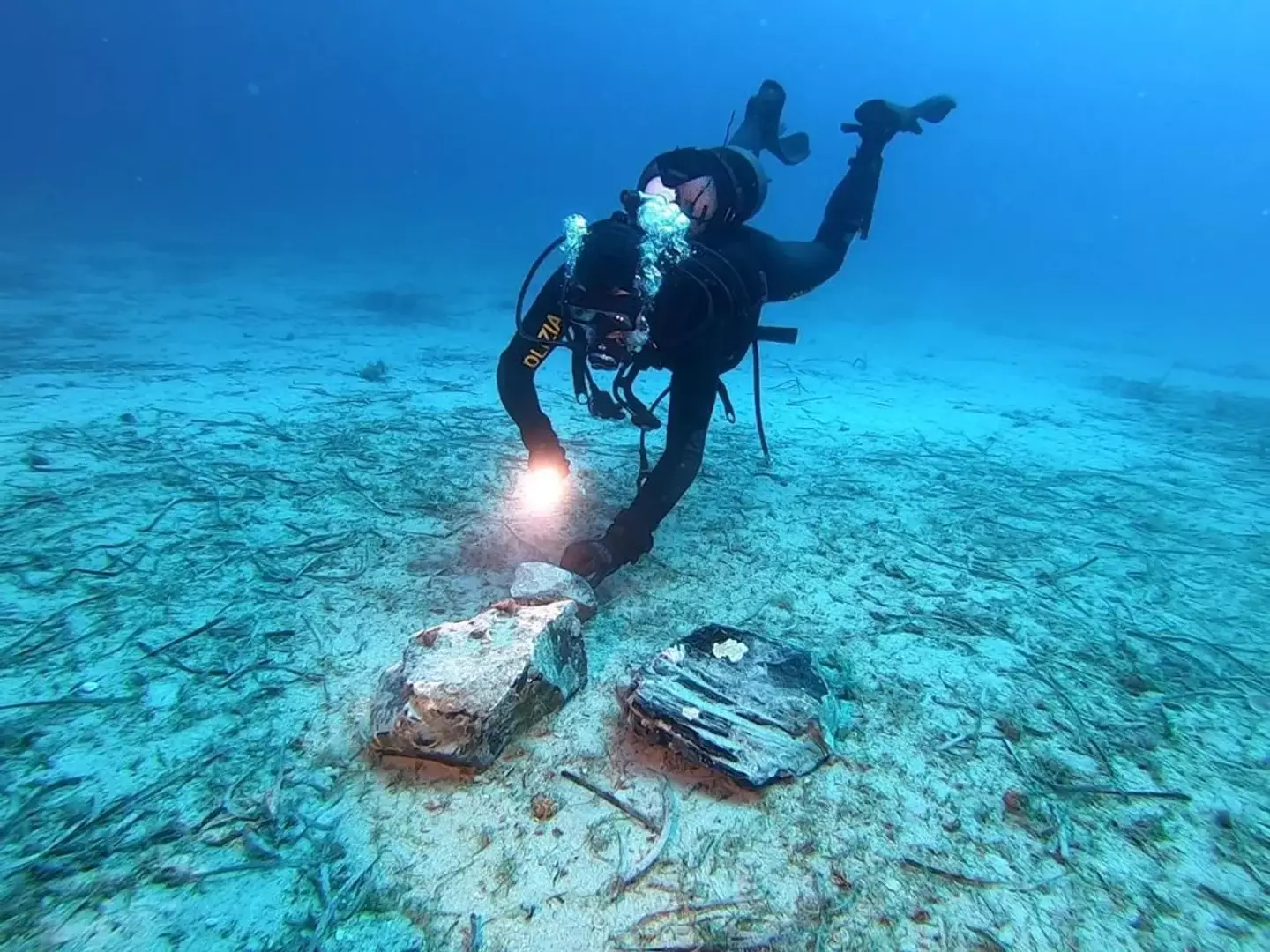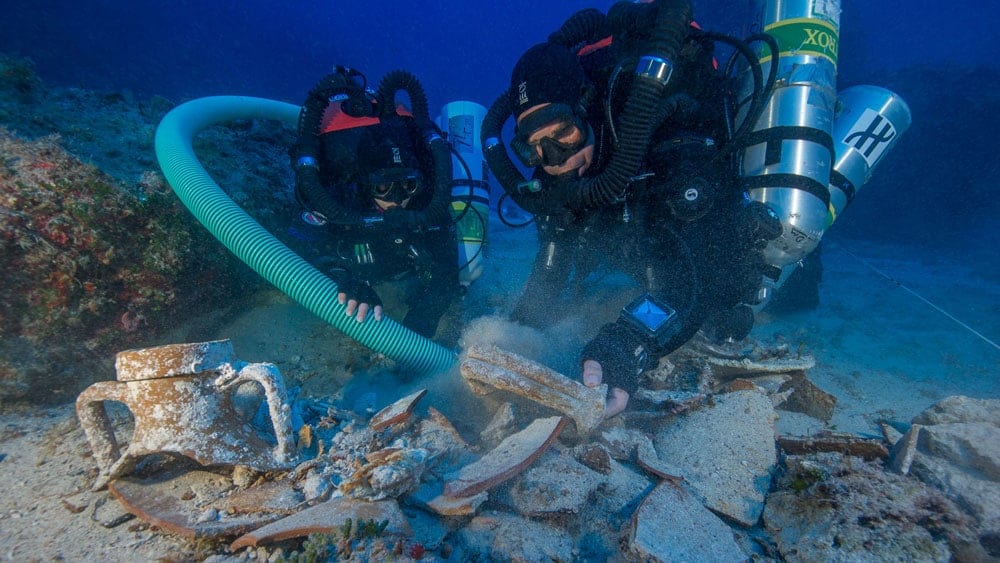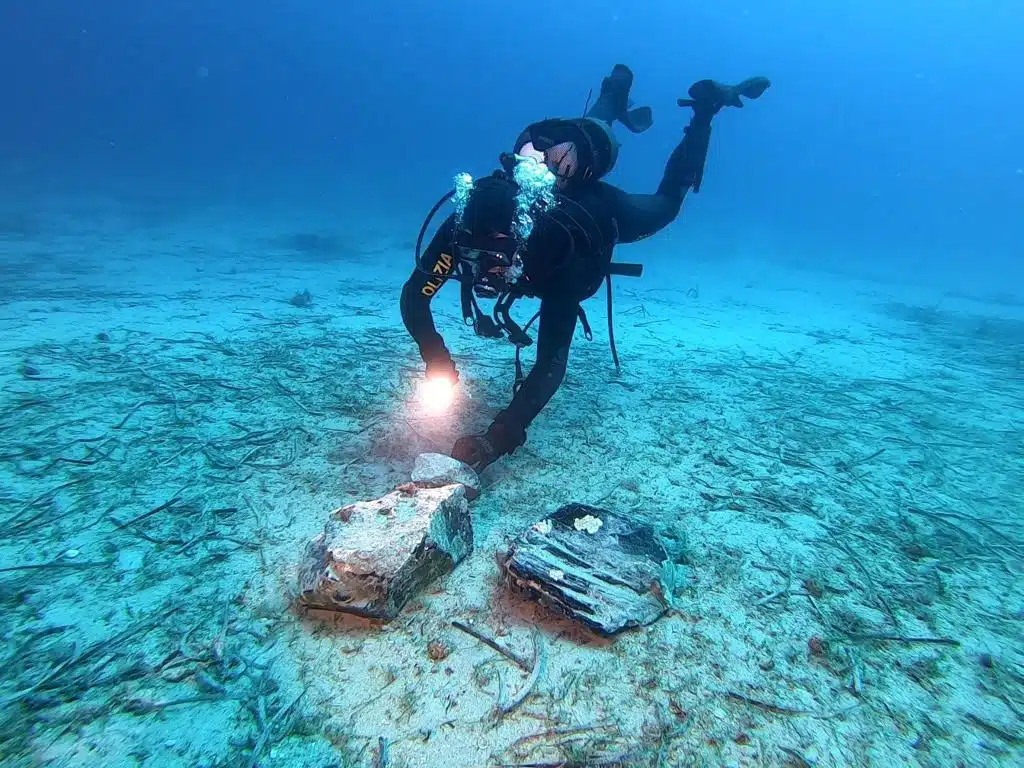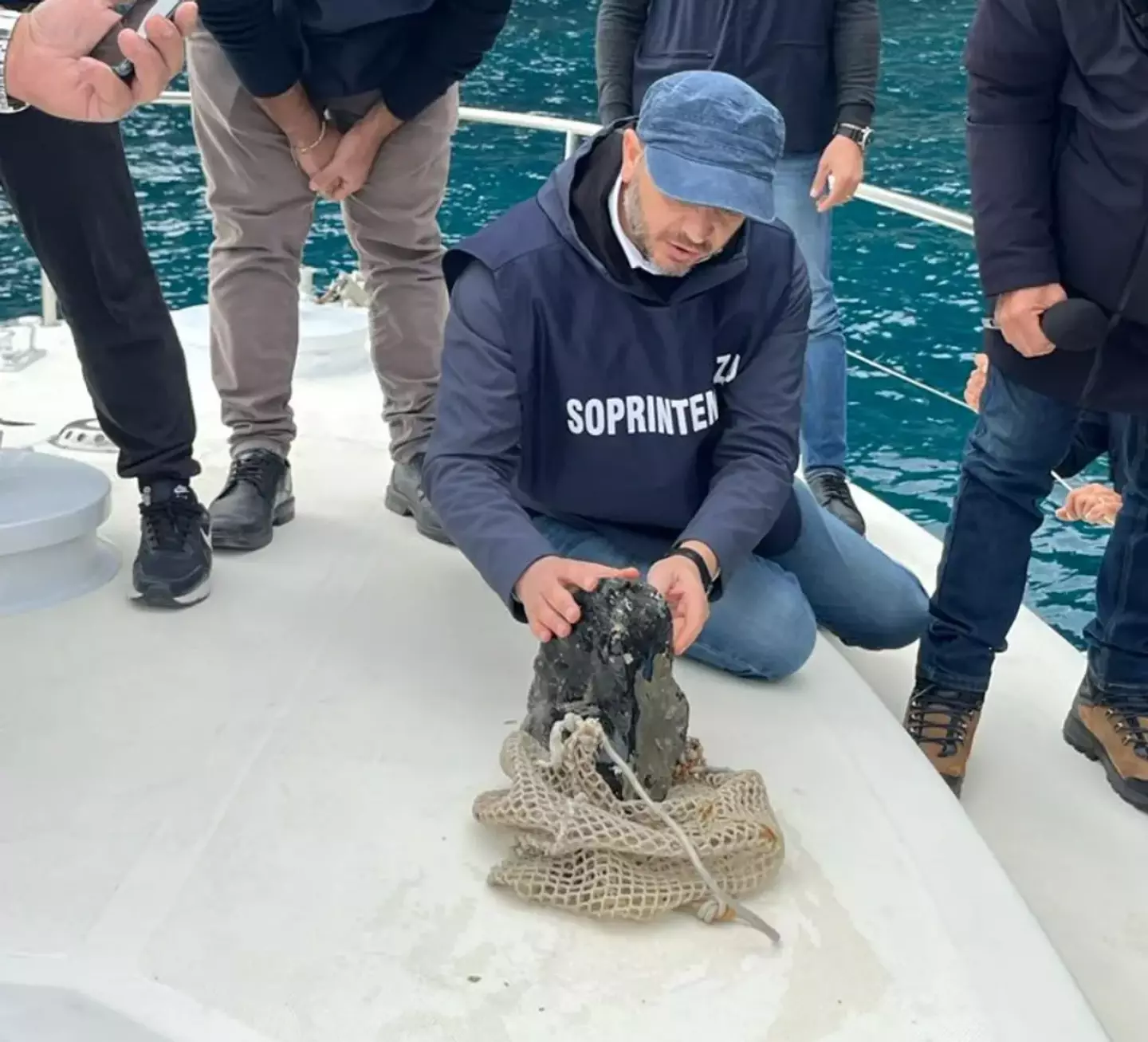A series of mysterious artefacts have been found off the coast of Naples, and while it could lead to further ‘mind-blowing’ discoveries, it’s also left scientists scratching their heads.

The exciting discovery was made near the island of Capri in the Bay of Naples, southern Italy, back in October.
The objects – made from volcanic glass – have been found near the White Grotto, a cavern not too far from the more famous Blue Grotto, popular with tourists thanks to its blue waters.
The most significant item found on the seabed has a weight of eight kilograms (17.6 pounds) and measures around 28 x 20 x 15 centimetres (11 x 8 x 6 inches).

Superintendency of the Metropolitan Area of Naples
Found at a depth of 30 to 40 meters (98 to 132 feet) below the surface, the object is puzzling researchers as no one seems to know what it was used for exactly. Interestingly, the artefact bears marks and carvings on its surface that confirm it was modified by human hands in some way.

“It is necessary to carry out an extensive instrumental survey of the seabed to verify the possible presence of the hull or other cargo material,” Mariano Nuzzo, the superintendent of archaeology, fine arts, and landscape for the Naples metropolitan area, said in a statement released in November.

If marine archaeologists were to find a Stone Age shipwreck, this would be the first discovery of its kind, as Sandro Barucci, a researcher and author of books on ancient seafaring, told Newsweek.
“The remains of a Neolithic hull in Mediterranean waters have never been found to date. There are cases of Neolithic boats found on the European mainland or in freshwater, lakes, and rivers. But the Mediterranean Sea has a pleasant temperature and salinity for the wood-eating mollusk, Teredo navalis.

Superintendency of the Metropolitan Area of Naples
“Thus, wooden ships of all ages, when they sink in the Mediterranean, are prey for these mollusks,” he explained.
.webp)
“At Capri, if the boat had sunk quickly into the sand and remained protected, it would perhaps be possible to find some wooden parts, especially if it were a dugout canoe – i.e. made from a single large hollowed-out tree trunk. But it would truly be a very rare event, indeed unique,” he added.
While it isn’t clear at present if the hull will ever be found, Nuzzo hinted at how further explorations of the seabed could clarify how the obsidian objects were deposited to the seafloor, while also investigating the role of prehistoric Capri.